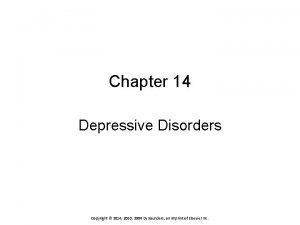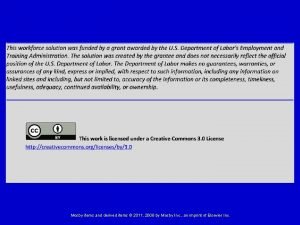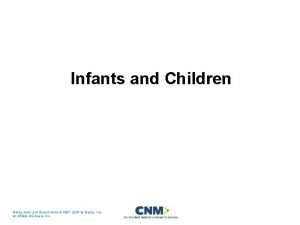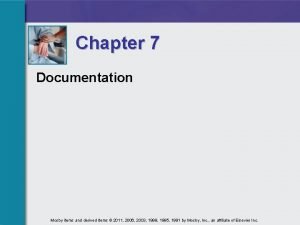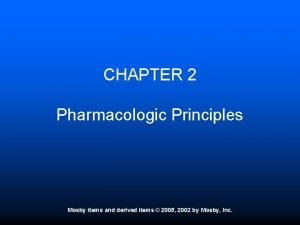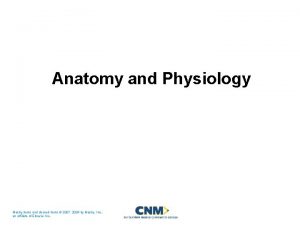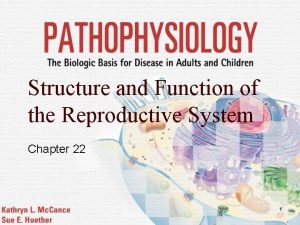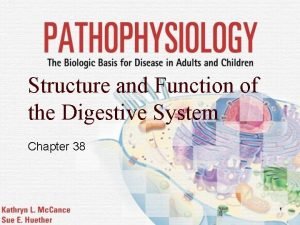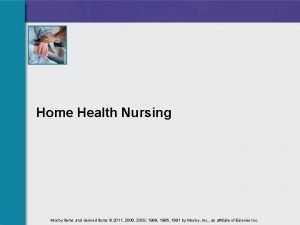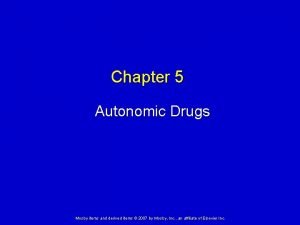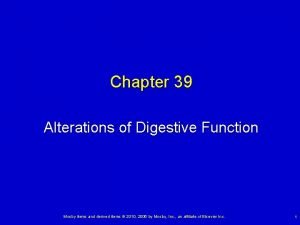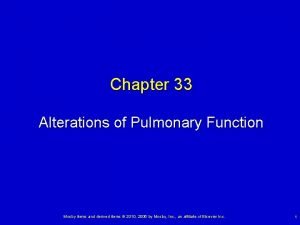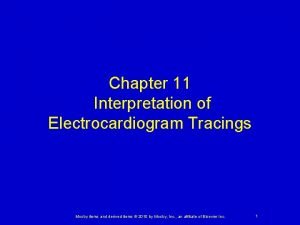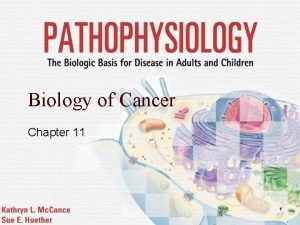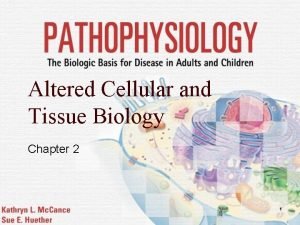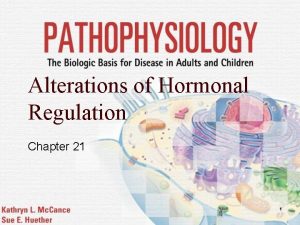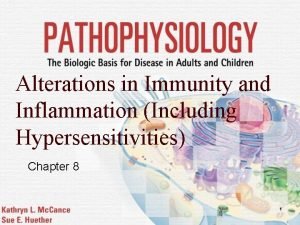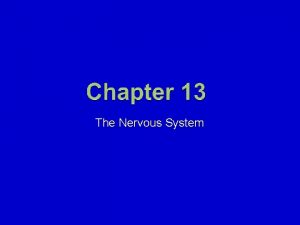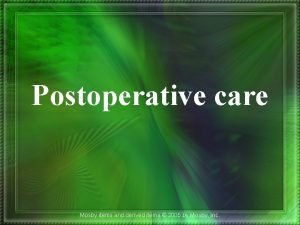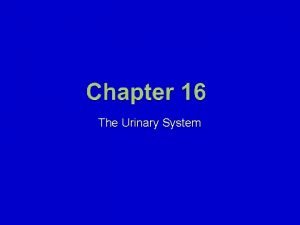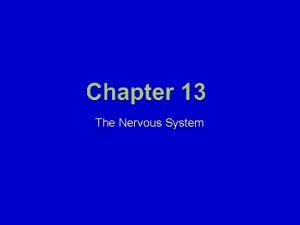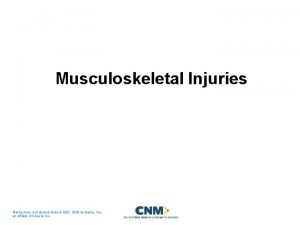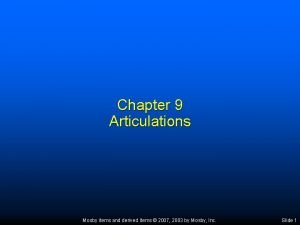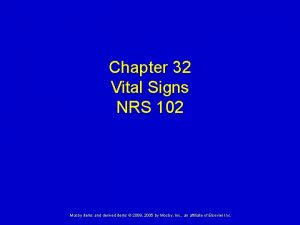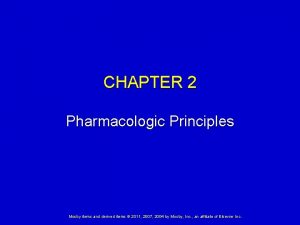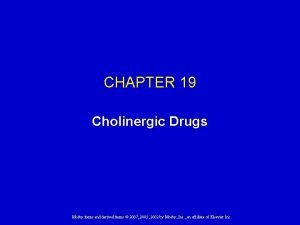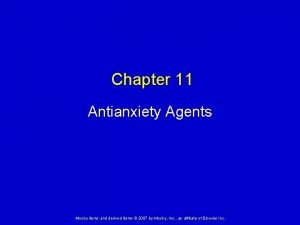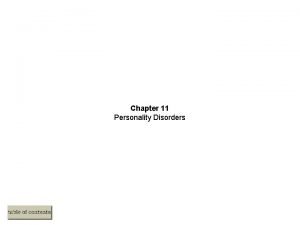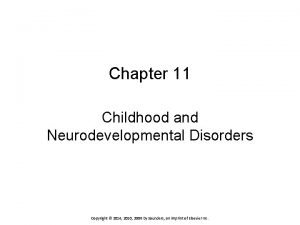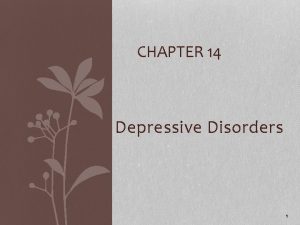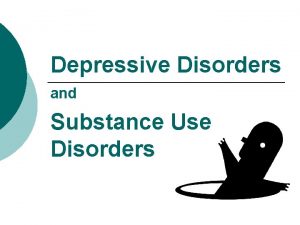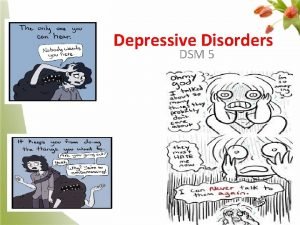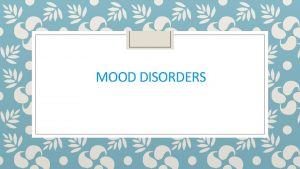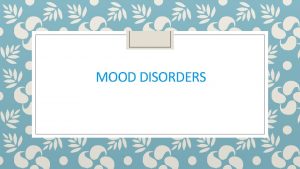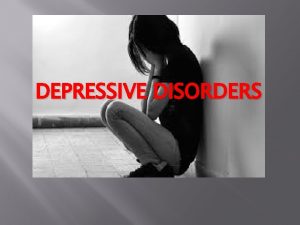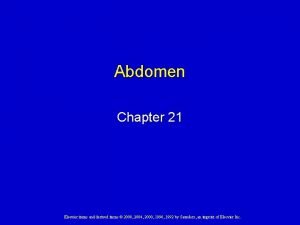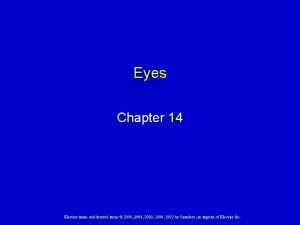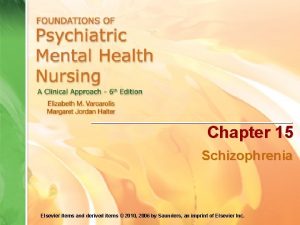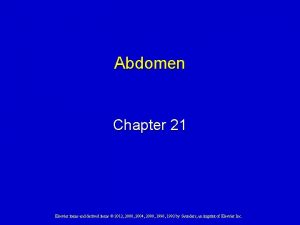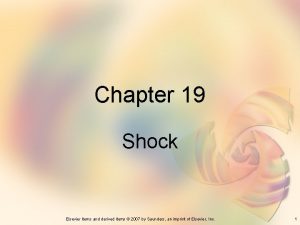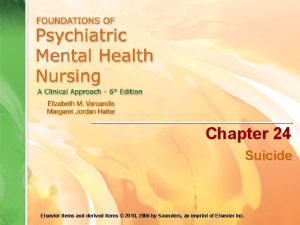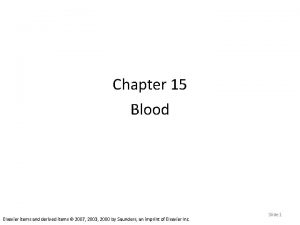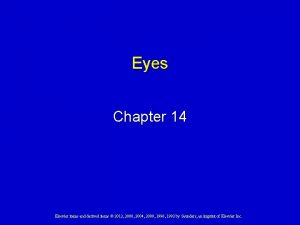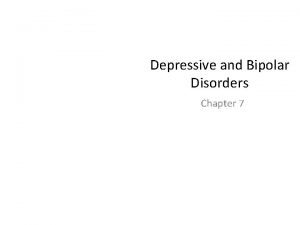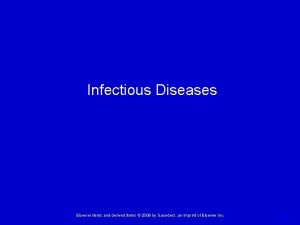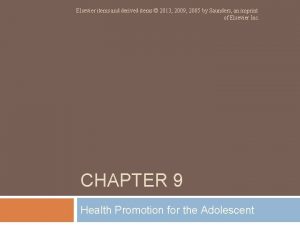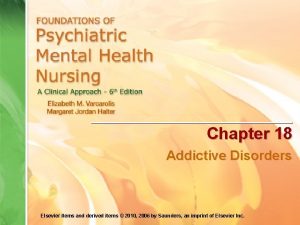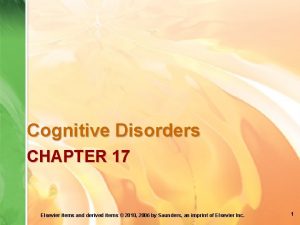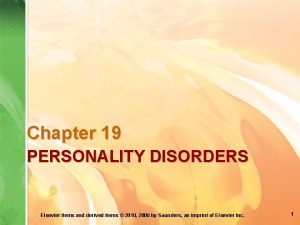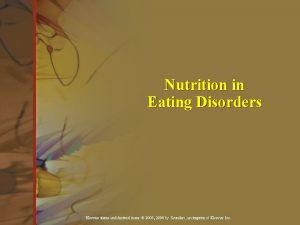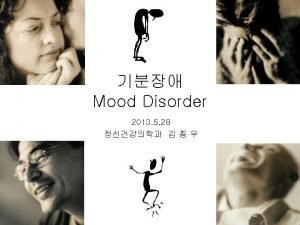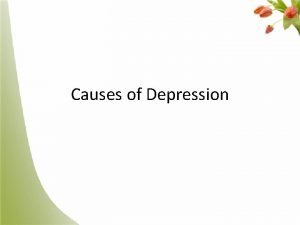Chapter 13 Depressive Disorders Elsevier items and derived










































- Slides: 42

Chapter 13 Depressive Disorders Elsevier items and derived items © 2010, 2006 by Saunders, an imprint of Elsevier Inc. 1

Major Depressive Disorder History of one or more major depressive episodes No history of manic or hypomanic episodes Symptoms interfere with social or occupational functioning May include psychotic features Affects twice as many women as men Onset usually occurs in the person’s mid-30’s Elsevier items and derived items © 2010, 2006 by Saunders, an imprint of Elsevier Inc. 2

Major Depressive Disorder Subtypes Psychotic features Melancholic features Atypical features Catatonic features Postpartum onset Seasonal features – seasonal affective disorder (SAD) Elsevier items and derived items © 2010, 2006 by Saunders, an imprint of Elsevier Inc. 3

Proposed Subtypes Premenstrual dysphoric disorder Mixed anxiety-depression Recurrent brief depression Minor depression Elsevier items and derived items © 2010, 2006 by Saunders, an imprint of Elsevier Inc. 4

Dysthymic Disorder Chronic depression for the majority of most days for at least 2 years Symptoms are less severe than major depression with fewer physiologic symptoms Predispose people to develop major depression Often occur in childhood and adolescence Elsevier items and derived items © 2010, 2006 by Saunders, an imprint of Elsevier Inc. 5

Epidemiology Leading cause of disability in the United States Children and adolescents Older adults Comorbidity Elsevier items and derived items © 2010, 2006 by Saunders, an imprint of Elsevier Inc. 6

Etiology Biological factors Genetic Biochemical Alterations in hormonal regulation • Diathesis-stress model Psychological factors Cognitive theory Learned helplessness Elsevier items and derived items © 2010, 2006 by Saunders, an imprint of Elsevier Inc. 7

Nursing Process Assessment Self-assessment Unrealistic expectations of self Feeling what the patient is feeling Assessment tools Assessment of suicide potential Key assessment findings Elsevier items and derived items © 2010, 2006 by Saunders, an imprint of Elsevier Inc. 8

Assessment Subjective Data: Suicidal ideation Feelings of sadness Fatigue Lack of interest Feelings of worthlessness Impaired concentration and decision-making ability Sleep disturbance (insomnia or hypersomnia) Appetite changes (weight gain or weight loss) Somatic concerns Elsevier items and derived items © 2010, 2006 by Saunders, an imprint of Elsevier Inc. 9

Assessment Objective Data: Females under the age of 40 Prior episodes of depression Family history of mood disorder History of recent stressful event Lack of social support Psychomotor agitation or retardation Pattern of social withdrawal Lack of social participation Elsevier items and derived items © 2010, 2006 by Saunders, an imprint of Elsevier Inc. 10

Nursing Process Continued Areas to assess Affect Thought processes Mood Feelings Physical behavior Communication Religious beliefs and spirituality Elsevier items and derived items © 2010, 2006 by Saunders, an imprint of Elsevier Inc. 11

A Mnemonic for Symptoms of MDD “SIGECAPS” Sleep changes Interest (lost of) Guilt (worthlessness, hopelessness, regret) Energy loss of fatigue Concentration difficulties Appetite changes (low or increased appetite, weight loss or gain) Psychomotor retardation or agitation Suicidality Elsevier items and derived items © 2010, 2006 by Saunders, an imprint of Elsevier Inc. 12

Which question would be a priority when assessing for symptoms of major depression? Elsevier items and derived items © 2010, 2006 by Saunders, an imprint of Elsevier Inc. 13

a. “Tell me about any special powers you believe you have. ” b. “You look really sad. Have you ever thought of harming yourself? ” c. “Your family says you never stop. How much sleep do you get? ” d. “Do you ever find that you don’t remember where you’ve been or what you’ve done? ” Elsevier items and derived items © 2010, 2006 by Saunders, an imprint of Elsevier Inc. 14

Nursing Process Continued Nursing Diagnosis Risk for suicide – safety is the highest priority Hopelessness Ineffective coping Social isolation Spiritual distress Self-care deficit Elsevier items and derived items © 2010, 2006 by Saunders, an imprint of Elsevier Inc. 15

Nursing Process Continued Outcomes Identification Recovery model Focus on patient’s strengths Treatment goals mutually developed Based on patient’s personal needs and values Elsevier items and derived items © 2010, 2006 by Saunders, an imprint of Elsevier Inc. 16

Nursing Process Continued Planning Geared towards Patient’s phase of depression Particular symptoms Patient’s personal goals Elsevier items and derived items © 2010, 2006 by Saunders, an imprint of Elsevier Inc. 17

Nursing Process Continued Implementation Three phases Acute phase (6 to 12 weeks) Continuation phase (4 to 9 months) Maintenance phase (1 year or more) Elsevier items and derived items © 2010, 2006 by Saunders, an imprint of Elsevier Inc. 18

Nursing Process Continued Basic Level Interventions Counseling and communication Health teaching and health promotion Promotion of self-care activities Milieu therapy Elsevier items and derived items © 2010, 2006 by Saunders, an imprint of Elsevier Inc. 19

Nursing Process Continued Identify the patient’s potential for suicide Create a safe environment Formulate verbal contract with patient to notify staff members when feelings begin to get out of control Encourage patient to express anger in acceptable ways Assists patient in recognizing strengths and accomplishments Assist patient in performing activities of daily living Elsevier items and derived items © 2010, 2006 by Saunders, an imprint of Elsevier Inc. 20

Nursing Process Continued Assess for suicide risk by direct questioning about suicidal thinking, history of suicide attempts, and whether the client has a specific suicide plan The more organized the plan is, the more concern it generated as safety is a priority Suicidal clients should be placed under suicide precautions Close staff supervision Remove items such as sharps, belts, shoe laces, mirror etc. No-suicide contract Elsevier items and derived items © 2010, 2006 by Saunders, an imprint of Elsevier Inc. 21

Nursing Process Continued Advanced Practice Interventions Psychotherapy Cognitive behavioral therapy (CBT) Interpersonal therapy (IT) Time-limited focused psychotherapy Behavior therapy Group therapy Elsevier items and derived items © 2010, 2006 by Saunders, an imprint of Elsevier Inc. 22

Psychopharmacology Tricyclic antidepressants (TCAs) Neurotransmitter effects (5 HT, NE) FDA Indications: MDD, Childhood Enuresis Contraindications: mitral valve disease, heart blocks increased heart rate and fatal arrhythmias Overdose Effects: Delirium, hyperthermia, convulsion, coma, respiratory failure and death. Elsevier items and derived items © 2010, 2006 by Saunders, an imprint of Elsevier Inc. 23

Side Effects of TCA Anticholinergic (dry mouth, dry eyes, blurred vision, constipation, palpitations, and urinary retention) Tremors, Twitching Orthostatic hypotension Paresthesias Ataxia Increased suicidal thoughts Sexual Dysfunction Weight gain 10 – 20 lbs Dizziness Sedation Elsevier items and derived items © 2010, 2006 by Saunders, an imprint of Elsevier Inc. 24

Tricylic Antidepressant Amitriptyline - Elavil® (25 - 300 mg/d) Amoxapine - Asendin® (25 - 600 mg/d) Clomipramine - Anafranil® (25 - 250 mg/d) Desipramine - Norpramin® (10 - 300 mg/d) Doxepin - Sinequan® (10 - 300 mg/d) Imipramine - Tofranil® (10 - 300 mg/d) Maprotiline - Ludiomil® (25 - 225 mg/d) Nortriptyline - Pamelor® (50 - 150 mg/d) Protriptyline - Vivactil® (5 - 60 mg/d) Trimipramine - Surmontil® (25 - 200 mg/d) Elsevier items and derived items © 2010, 2006 by Saunders, an imprint of Elsevier Inc. 25

Psychopharmacology Continued Monoamine oxidase inhibitors (MAOIs) Neurotransmitter effects Indications: useful in atypical depression (increased sleep, increased appetite, anxiety, rejection Adverse/toxic effects: hypertensive crisis Interactions Sympathomimetics, SSRIs, SNRIs, TCA Food: Foods containing tyramine Drug: Elsevier items and derived items © 2010, 2006 by Saunders, an imprint of Elsevier Inc. 26

Monoamine Oxidase Inhibitors (MAOI) Phenelzine - Nardil (7. 5 - 90 mg/d) Tranylcypromine - Parnate (10 - 60 mg/d) Isocarboxazid - Marplan (20 - 60 mg/d Selegiline - Emsam (Patch) 6 mg - 12 mg/d Moclobemide – Manerix (Canada) St. John’s Wort Side effects: Dizziness, headache, stiff neck, N/V, restlessness, insomnia, dry mouth, sexual dysfunction, weight gain and Hepatic necrosis Elsevier items and derived items © 2010, 2006 by Saunders, an imprint of Elsevier Inc. 27

The BIG Deal with MAOI Food interaction: pickled, fermented, smoked, or aged foods, such as red wine, preserved food, aged stinky cheese, which leads to hypertensive crises resulting in intracranial bleed. Drug Interaction Other antidepressants OTC cold and flu medications Demerol Elsevier items and derived items © 2010, 2006 by Saunders, an imprint of Elsevier Inc. 28

Psychopharmacology Antidepressants Selective serotonin reuptake inhibitors (SSRIs) First-line therapy Indications Adverse reactions Potential toxic effects Elsevier items and derived items © 2010, 2006 by Saunders, an imprint of Elsevier Inc. 29

Selective Serotonin Reuptake Inhibitor (SSRI) Citalopram - Celexa® (20 -60 mg/d) 1998 Escitalopram - Lexapro® (10 -20 mg/d) Isomer of Citalopram Fluoxetine - Prozac® (20 -80 mg/d) 1987 Prozac Weekly (90 mg enteric-coated delayed release capusule) Sarafem® (20 - 60 mg/d for PMS) Fluvoxamine - Luvox® (50 - 300 mg/d) Paroxetine - Paxil® (20 - 50 mg/d) Paxil CR (12. 5 - 62. 5 mg/d) enteric coated Sertraline - Zoloft® (50 - 200 mg/d) 1992 Elsevier items and derived items © 2010, 2006 by Saunders, an imprint of Elsevier Inc. 30

Possible Side Effects SSRI Nausea and Vomiting Nervousness Sleep disturbance Somnolence Constipation Sexual dysfunction: libido and orgasm GI upset Tremors Weight gain Cognitive problems: word finding Elsevier items and derived items © 2010, 2006 by Saunders, an imprint of Elsevier Inc. 31

Issues With SSRIs Discontinuation Symptoms Dizziness Nausea Pins and needles Zappers (Prozac does not cause discontinuation symptoms = 16 weeks half life) Loss of efficacy = poop out Partial response Elsevier items and derived items © 2010, 2006 by Saunders, an imprint of Elsevier Inc. 32

Serotonin Norepinephrine Reuptake Inhibitor SNRI Venlafaxine - Effexor®, (75 - 225 mg/d) Effexor XR® (75 - 225 mg/d) Desvenlafaxine – Pristiq® (50 – 400 mg/d) Duloxetine – Cymbalta® (20 -60 mg/d for depression 60 - 120 mg/d for diabetic peripheral neuropathy) Elsevier items and derived items © 2010, 2006 by Saunders, an imprint of Elsevier Inc. 33

Other Antidepressants Bupropion - Wellbutrin®, Wellbutrin SR®, Wellbutrin XL®, Zyban® - (75 -450 mg/d) Enhances release of norepinephrine and dopamine (NDRI) Be careful in people with history of seizure disorder, head trauma and eating disorders. Side effects: anxiety, agitation, insomnia, nausea, tremor and weight loss Mirtazapine - Remeron® (15 - 45 mg/d) SN Nefazodone - Serzone® (200 - 600 mg/d) Trazadone - Desyrel® (200 - 600 mg/d) Elsevier items and derived items © 2010, 2006 by Saunders, an imprint of Elsevier Inc. 34

Serotonin Syndrome Mild in most people, recovery within 24 - 72 hours, although it can cause death under circumstances Seen in people taking two or more medications that increase levels of serotonin in the CNS Symptoms: 3 of the following must be present Mental status changes Agitation Myoclonus Shivering Hyperreflexia Ataxia Diaphoresis hyperpyrexia Elsevier items and derived items © 2010, 2006 by Saunders, an imprint of Elsevier Inc. 35

Management and Prevention of Serotonin Syndrome Supportive measures Discontinue medication Provide benzodiazepine Anti-serotonergic agents: Periactin, Sansert, Inderal Dantrium for relieving muscle rigidity and hyperthermia Elsevier items and derived items © 2010, 2006 by Saunders, an imprint of Elsevier Inc. 36

Other Treatments for Depression Electroconvulsive therapy (ECT) Transcranial magnetic stimulation Vagus nerve stimulation Light therapy St. John’s wort Exercise Elsevier items and derived items © 2010, 2006 by Saunders, an imprint of Elsevier Inc. 37

Electroconvulsive Therapy (ECT) Treatment procedure during which an electric current is passed through the brain. Unilateral or bilateral Indication: severe depression, acute mania, psychotic symptoms, acutely suicidal Treatment is 3 times a week until the course of 12 treatments is completed Causes generalized seizure (tonic-clonic) Contraindication: ICP and recent MI Side effects: transient short-term memory loss Not a cure Elsevier items and derived items © 2010, 2006 by Saunders, an imprint of Elsevier Inc. 38

Working with Clients Receiving ECT Consent forms completed Keep pt NPO for at least 4 hours Ask the patient to void and remove contact lenses, jewelry, hairpins, and dentures prior to treatment Assess vital signs Medications: Robinul®, Brevital®, Anectine® Recovery: lateral recumbent position, orient to time, place and situation Offer food Offer medication for Headache Elsevier items and derived items © 2010, 2006 by Saunders, an imprint of Elsevier Inc. 39

Complimentary and Alternative Medicine St John’s Wort (Hypericum perforatum) (1, 200 mg – 1, 800 mg) SAM-e (s-adenosylmethionine) (800 mg/d) Omega 3 FFA (1 – 2 grams/d) Folic Acid (0. 3 mg/d) Nature Made Jarrow Life Extension Elsevier items and derived items © 2010, 2006 by Saunders, an imprint of Elsevier Inc. 40

Complimentary and Alternative Medicine Meditation: help with stress, mood disturbance, anxiety, depression, pain of chronic illness, other conditions Pressure point therapies (acupuncture, acupressure): healing, pain relief, physical and emotional well-being Touch therapies, including massage: reduced pain and anxiety, relaxation and healing; help for depression, addiction, dementia, anxiety Elsevier items and derived items © 2010, 2006 by Saunders, an imprint of Elsevier Inc. 41

Nursing Process Continued Evaluation Short-term indicators and outcome criteria Reassess and reformulate care plan as necessary Future of treatment Elsevier items and derived items © 2010, 2006 by Saunders, an imprint of Elsevier Inc. 42
 Chapter 14 depressive disorders
Chapter 14 depressive disorders Mosby items and derived items
Mosby items and derived items Mosby items and derived items
Mosby items and derived items Mosby items and derived items
Mosby items and derived items Mosby items and derived items
Mosby items and derived items Mosby
Mosby Reproductive system
Reproductive system Mosby items and derived items
Mosby items and derived items Mosby items and derived items
Mosby items and derived items Autonomic drugs
Autonomic drugs Mosby items and derived items
Mosby items and derived items Mosby items and derived items
Mosby items and derived items Absorption atelectasis
Absorption atelectasis Mosby items and derived items
Mosby items and derived items Mosby items and derived items
Mosby items and derived items Altered cellular and tissue biology
Altered cellular and tissue biology Mosby items and derived items
Mosby items and derived items Mosby items and derived items
Mosby items and derived items Mosby items and derived items
Mosby items and derived items Mosby items and derived items
Mosby items and derived items Mosby items and derived items
Mosby items and derived items Mosby items and derived items
Mosby items and derived items Mosby items and derived items
Mosby items and derived items Mosby items and derived items
Mosby items and derived items Mosby items and derived items
Mosby items and derived items Mosby items and derived items
Mosby items and derived items Mosby items and derived items
Mosby items and derived items Mosby items and derived items
Mosby items and derived items Paranoid personality disorder mnemonic
Paranoid personality disorder mnemonic Fritz riemann grundformen der angst
Fritz riemann grundformen der angst What's bipolar
What's bipolar Major depressive disorder
Major depressive disorder Define a primary skin lesion and list three types
Define a primary skin lesion and list three types Chapter 6 musculoskeletal system diseases and disorders
Chapter 6 musculoskeletal system diseases and disorders Chapter 46 digestive and endocrine disorders
Chapter 46 digestive and endocrine disorders Chapter 29 somatic symptom and dissociative disorders
Chapter 29 somatic symptom and dissociative disorders Chapter 29 endocrine and metabolic disorders
Chapter 29 endocrine and metabolic disorders Chapter 21 mental health diseases and disorders
Chapter 21 mental health diseases and disorders Chapter 18 eating and feeding disorders
Chapter 18 eating and feeding disorders Chapter 17 reproductive system diseases and disorders
Chapter 17 reproductive system diseases and disorders Chapter 15 nervous system diseases and disorders
Chapter 15 nervous system diseases and disorders Chapter 15 anxiety and obsessive-compulsive disorders
Chapter 15 anxiety and obsessive-compulsive disorders Chapter 11 childhood and neurodevelopmental disorders
Chapter 11 childhood and neurodevelopmental disorders
